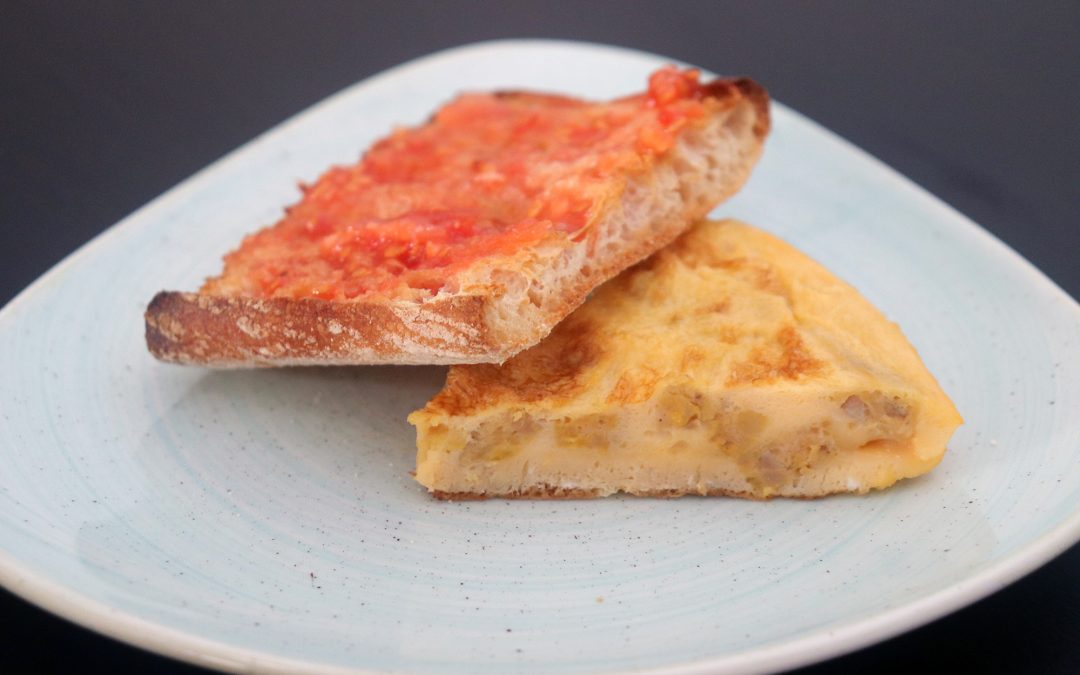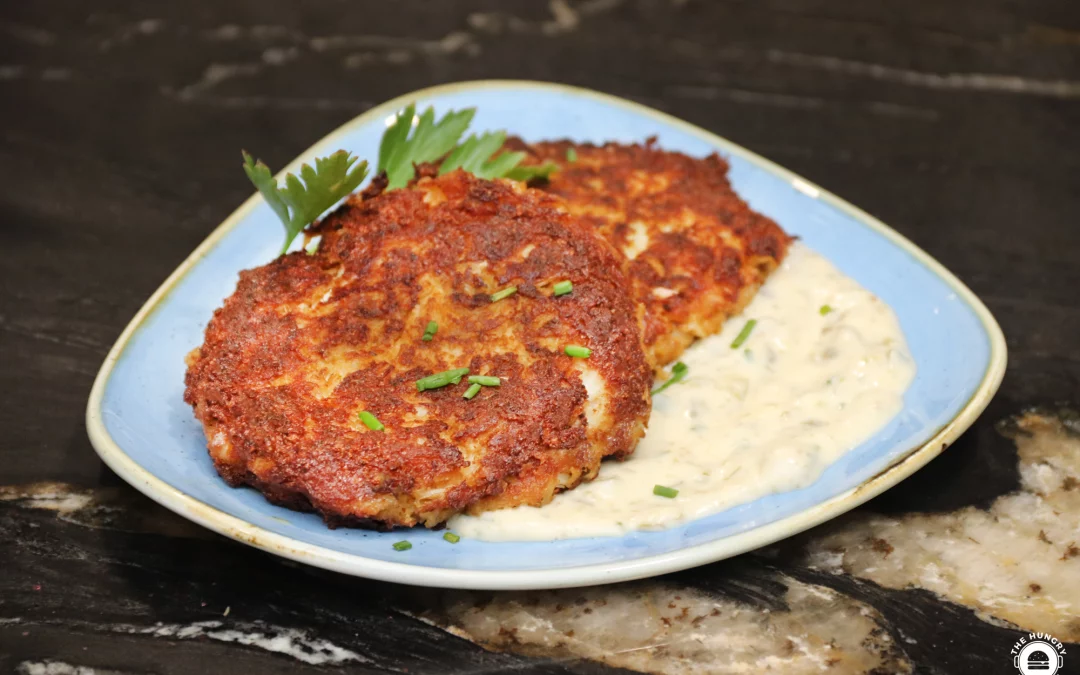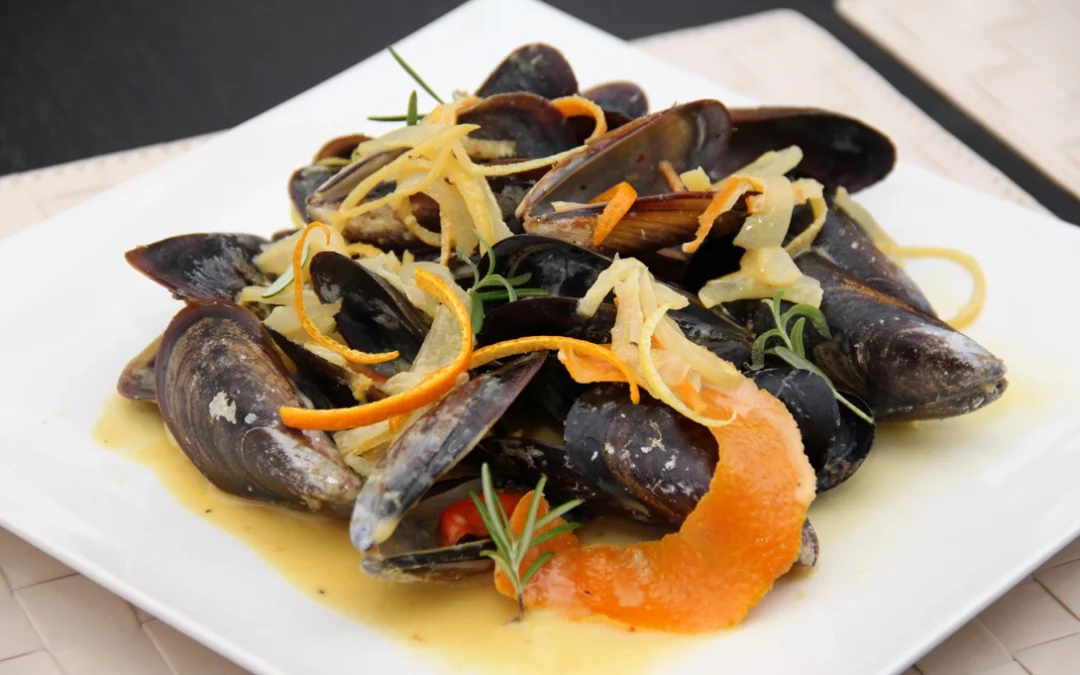CATALAN FOOD
Fideuà
Fideuà is a traditional Valencian dish similar to paella but made with short noodles instead of rice. It originated in the coastal region around Gandia, and is popular along the Mediterranean coast of Spain, including Catalonia.
90 minutes by Anthony Hadley

Fideuà served in a traditional paella pan
What is fideuà?
The word fideuà is the Valencian pronunciation of fideuada, which means “noodle dish” in Catalan. As mentioned, fideuà is closely related to seafood paella, but instead of rice, it’s made with short, thin noodles called fideus (similar to Mexican fideos). Traditionally, it’s cooked in a wide, shallow pan known as a paellera. [Some debate this, calling the pan itself paella. In Catalan, though, “paella” refers to any pan, so the one used for this dish is colloquially referred to as a paellera].
The noodles are typically shallow-fried until golden and crispy, giving the dish a subtly toasted flavor. Then, they’re simmered in rich fish stock alongside seafood like prawns and cuttlefish, mixed with sofregit (known as ‘sofrito’ in Spanish)—a delicious base of sautéed onions, garlic, tomatoes, and peppers. In my version, I use onion, tomato, and nyora peppers, a smoky Catalan pepper that might be tricky to find elsewhere. If needed, you can substitute with smoked paprika or a mild, non-spicy Mexican pepper.
It’s also worth noting that in Catalonia and Gandia, the dish almost always uses short, thin noodles. In some places, you might come across versions made with hollow, elbow-shaped pasta, but that’s not considered authentic. A signature feature of traditional fideuà is how the noodles curl upwards when served, usually with a side of allioli.
The origin of fideuà
Fideuà originated in the coastal town of Gandia, in the Valencia region. Legend has it that fishermen on a boat often ran out of rice when making arròs a banda, a traditional seafood and rice dish, because their captain had quite the appetite. To solve this, the cook on board swapped the rice out for noodles, hoping the captain wouldn’t like it as much, leaving more for the crew.
But the plan backfired—in a good way. The dish was a hit, quickly spreading to local restaurants and the rest of Spain. Today, in the La Safor region where fideuà was born, there’s even an annual competition where chefs compete to make the best version of this iconic dish.

Fideuà plated with allioli and romesco
My fideuà recipe
When I make fideuà, I usually go with cuttlefish, prawns, and some kind of shellfish, like mussels or wedge clams. I tend to skip adding bell peppers to the sofregitbecause I feel their flavor doesn’t quite complement the rest of the dish. I also like to add a personal touch—a sprinkle of ground, toasted almonds on top, which everyone seems to really enjoy.
For the stock, I use what we call fumet in Catalan, a rich fish broth. You can also use store-bought fish stock or even vegetable broth if you want to save time. And finally, I always serve it with a side of homemade garlic mayonnaise. The sharpness and slight acidity of the allioli cuts through the rich flavors of the fideuà, balancing out the overall heartiness of the dish.
Ready to give it a go yourself? Keep reading for the full list of ingredients and step-by-step instructions.

About me
Soc l’Anthony, el ianqui famolenc!
I’m a small-town boy from California living the big-city life in Barcelona since 2006. Join me and my furry sidekick, Mimosa, as I dish up home-cooked meals from both my homeland, the US, and my adoptive land, Catalonia.
Bon profit! 🥘🍷
Buy me a glass of sangria! 🍷
Click below if you’d like to help keep this project going. Moltes gràcies! 🤗
View more categories
Ingredients to make fideuà
— 2 leeks
— 1 stick of celery
— 3 sprigs of parsley
— 1 bay leaf
— Fish carcasses
— Shrimp heads
— 4 (1 liter) cups of water
— Salt to taste
— 1 large tomato
— 1 teaspoon of tomato paste
— 125 ml (1/2 cup) of extra virgin olive oil
— 1 teaspoon of nyora paste or smoked paprika
— 250 ml (1 cup) of white wine or vi ranci
— 400 g (14 oz) of clean cuttlefish or squid
— 100 g (4 oz) of large prawns
— 100 g (4 oz) of mussels or clams
— 250 g ( 10 oz) of short noodles (fideos or vermicelli tagliati)
— 20 g (1 oz) peeled almonds
— Salt to taste
— 1/2 lemon
— 300 ml (1 1/4 cup) light oil
— A pinch of saffron
— Salt to taste
How to make fideuà
💡Tip: Avoid boiling the broth on high heat to prevent cloudiness. If you don’t have fish carcasses, store-bought fish or vegetable broth works too.
💡Tip: Make the allioli before cooking in case the mayonnaise splits, giving you time to retry.
💡Tip: Don’t leave the pan unattended at this stage, as ingredients can easily burn.
Other recipes you might enjoy…

About me
Soc l’Anthony, el ianqui famolenc!
I’m a small-town boy from California living the big-city life in Barcelona since 2006. Join me and my furry sidekick, Mimosa, as I dish up home-cooked meals from both my homeland, the US, and my adoptive land, Catalonia.
Bon profit! 🥘🍷





